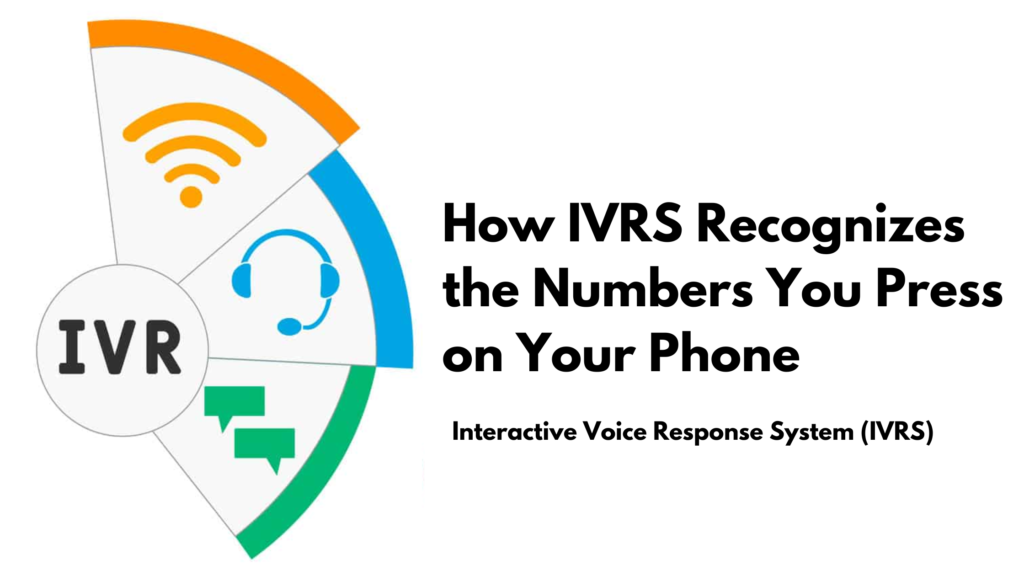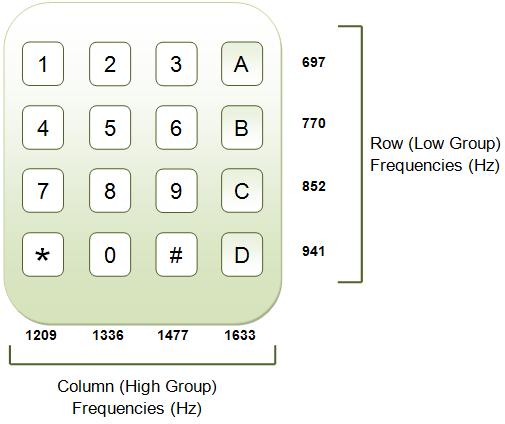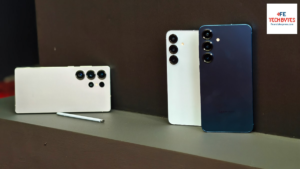If you’ve ever called customer service and been asked to “Press 1 for English, 2 for Hindi,” you’ve interacted with an Interactive Voice Response System (IVRS). While it might seem like magic, the technology behind IVRS is both fascinating and practical. It uses a combination of tones, signals, and algorithms to recognize the number you press on your phone’s keypad.
In this blog, we’ll explore how IVRS works, focusing on the technology that allows it to identify your input. By the end, you’ll have a clear understanding of how this system seamlessly guides you to the right service.

What Is IVRS?
Interactive Voice Response System (IVRS) is a telecommunication technology that interacts with callers, collects their input via a phone keypad, and routes them to the appropriate service or information. It’s commonly used in industries like banking, healthcare, and customer support to provide automated solutions and reduce the need for live agents.
The Role of DTMF in IVRS
At the heart of IVRS lies a technology called Dual-Tone Multi-Frequency (DTMF). When you press a button on your phone, it generates a unique sound composed of two frequencies. This dual-tone signal is how the system recognizes which number you pressed.
Here’s how it works:
- Frequency Pairs for Each Button:
Every button on your phone’s keypad corresponds to a pair of frequencies—one high and one low. For example:- The “1” key emits a combination of 697 Hz (low frequency) and 1209 Hz (high frequency).
- The “2” key emits 697 Hz and 1336 Hz.
- Sending the Signal:
When you press a button, your phone sends the DTMF tone through the telephone line. - IVRS Detection:
The IVRS is equipped with a DTMF decoder, which analyzes the incoming tone and identifies the corresponding number based on the frequency pair.

Breaking Down the Process
Here’s a step-by-step breakdown of what happens when you press a button on your phone during an IVRS call:
- Input Captured:
You press a button, like “3,” on your phone. This action generates a specific DTMF tone (697 Hz and 1477 Hz for “3”). - Signal Transmission:
The tone travels over the phone line to the IVRS system in real time. - Tone Decoding:
The IVRS has a DTMF decoder that matches the frequencies to the corresponding button. For example, when the system detects 697 Hz and 1477 Hz, it identifies the input as “3.” - Action Execution:
Once the number is identified, the system performs the action assigned to that input, such as routing your call to a specific department.

How Accurate Is IVRS at Recognizing Inputs?
Modern IVRS systems are highly accurate, thanks to advanced signal processing. However, there are factors that can affect recognition:
- Line Quality: Poor call quality or static can interfere with tone transmission.
- Background Noise: Ambient noise can sometimes disrupt tone detection, though advanced systems are designed to filter out such interference.
- Keypress Timing: If you press multiple keys too quickly, the system might misinterpret the input.
Advanced IVRS Features
While DTMF is the foundation of most IVRS systems, modern implementations go beyond keypad inputs. Here are some advanced features:
- Speech Recognition:
Advanced IVRS systems can recognize spoken words, allowing users to say commands like “Check my balance” instead of pressing buttons. - Natural Language Processing (NLP):
NLP-enabled IVRS can understand complex queries, making the experience more intuitive for users. - Multi-Channel Input:
Some IVRS systems can handle input from mobile apps, chatbots, and web platforms, in addition to traditional phone calls.

Applications of IVRS
IVRS systems are used in various industries to automate tasks and improve customer experience:
- Banking: Check account balances, transfer funds, or report lost cards.
- Healthcare: Schedule appointments, access lab results, or refill prescriptions.
- Customer Support: Resolve queries, track orders, or connect to an agent.
- E-commerce: Confirm orders, check delivery status, or process returns.
How to Fix IVRS Input Issues
If your input isn’t recognized by an IVRS system, here are some troubleshooting tips:
- Check Your Phone’s Tone Settings:
Ensure your phone is set to “tone dialing” instead of “pulse dialing.” - Eliminate Background Noise:
Try to make the call from a quiet environment. - Press Keys Firmly and Slowly:
This ensures the tones are transmitted clearly. - Retry the Call:
If all else fails, disconnect and call again to ensure a stable connection.
The Future of IVRS
As technology evolves, IVRS systems are becoming smarter and more user-friendly. AI-powered IVRS systems are now capable of understanding natural language, offering personalized experiences, and learning from interactions to improve over time. These advancements will make IVRS even more efficient and intuitive in the future.
Conclusion
The ability of an IVRS to recognize which number you’ve pressed on your keypad is rooted in the science of DTMF signals—a simple yet effective method that has revolutionized customer interactions. By automating routine tasks, IVRS not only saves time for businesses but also provides users with instant solutions. Understanding how it works can help you troubleshoot issues and appreciate the technology behind those automated voices guiding you through your next call.
So, the next time you “Press 1 for Service,” you’ll know exactly what’s happening behind the scenes!














